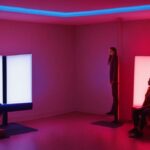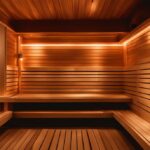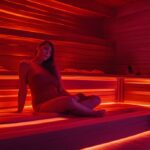Light therapy is a popular treatment method for various conditions, ranging from seasonal affective disorder and sleep disorders to skin conditions like psoriasis. While this therapy has proven to be effective in many cases, there is a possibility of overdoing it. In this regard, this discussion explores the question of whether or not it is possible to overdo light therapy.
Contents
Understanding Light Therapy
Light therapy is a type of treatment that uses specific wavelengths of light to improve mood, sleep, and skin health. It is a non-invasive treatment that has many benefits and is used to treat various conditions such as seasonal affective disorder (SAD), depression, sleep disorders, and more. The therapy works by exposing the body to light, which helps regulate circadian rhythms and improve the levels of serotonin and melatonin in the body.
The Benefits of Light Therapy
Light therapy has many benefits, including improving mood, sleep, and skin health. The therapy has been shown to be effective in treating seasonal affective disorder (SAD), depression, and sleep disorders. Light therapy can also help reduce inflammation, improve cognitive function, and enhance athletic performance.
Improving Mood
Light therapy is an effective treatment for improving mood. It helps regulate circadian rhythms, which can help improve symptoms of depression and seasonal affective disorder (SAD). The therapy is also known to improve the levels of serotonin and melatonin in the body, which are neurotransmitters that play a crucial role in mood regulation.
Enhancing Sleep
Light therapy can help regulate circadian rhythms, which can improve sleep quality. The therapy is also used to treat sleep disorders such as insomnia and jet lag. Exposure to light in the morning can help reset the body’s natural clock and improve sleep quality.
Improving Skin Health
Light therapy is used to treat various skin conditions such as acne, psoriasis, and eczema. The therapy works by exposing the body to specific wavelengths of light, which can help reduce inflammation and improve skin health.
While light therapy has many benefits, it is essential to use it correctly to avoid any adverse effects. Overdoing light therapy can lead to side effects such as headaches, eye strain, and nausea. It is also crucial to use the therapy in moderation to avoid disrupting the body’s natural rhythms.
Potential Side Effects
Overexposure to light therapy can lead to potential side effects such as headaches, eye strain, and nausea. It is essential to use the therapy in moderation and follow the recommended guidelines to avoid any adverse effects.
Understanding Moderation
Using light therapy in moderation is essential to avoid any adverse effects. Most light therapy devices come with recommended guidelines, including the duration and intensity of exposure. It is crucial to follow these guidelines to ensure that the therapy is effective and safe.
Consulting a Professional
If you are unsure about how to use light therapy correctly, it is essential to consult a healthcare professional. A healthcare professional can provide guidance on how to use light therapy safely and effectively.
FAQs for Can You Overdo Light Therapy
What is light therapy and how does it work?
Light therapy, also known as phototherapy, is a treatment that involves exposure to specific wavelengths of light that are designed to either mimic natural sunlight or target specific skin conditions such as psoriasis, eczema, or acne. It is used as a non-invasive procedure to relieve pain, reduce inflammation, and boost mood. The therapy is thought to work by triggering the production of vitamin D in your skin, which can help improve overall immune function, as well as by reducing the production of melatonin, which can help you feel more alert and energized.
Can you overdo light therapy?
While light therapy is generally considered safe and effective for most people, there is a growing concern that too much exposure to specific types of light can cause harm. For example, overexposure to blue light, which is emitted by electronic devices, can damage your eyes and disrupt your sleep cycle. Overexposure to UV light can cause skin damage and increase your risk of skin cancer. However, if you are using light therapy under the guidance of a qualified healthcare professional, and you are following the recommended exposure times and intensity levels, the risk of overexposure should be minimal.
What are the risks of overdoing light therapy?
If you overdo light therapy, you may experience a variety of negative side effects. For example, overexposure to UV light can cause skin damage, sunburn, and hyperpigmentation. Overexposure to blue light can cause eye strain, headaches, and disrupted sleep patterns. Additionally, overexposing yourself to any type of light therapy can increase your risk of developing skin cancer. It is important to talk to your doctor about the risks involved in light therapy, and to be sure that you are following the recommended exposure times and intensity levels for the type of light therapy you are receiving.
How long should I be exposed to light therapy?
The amount of time you should be exposed to light therapy will depend on the type of light therapy you are using, as well as the intensity of the light being used. In general, sessions can range from a few minutes to an hour or longer, and the frequency of sessions can vary depending on your specific condition and treatment goals. It is important to follow the instructions provided by your doctor or healthcare provider, and to never exceed the recommended exposure time or intensity levels. Doing so can increase your risk of overexposure and negative side effects.
Who should not use light therapy?
While light therapy can be an effective treatment option for many people, there are certain individuals who should not use it. For example, if you have a history of skin cancer, you should avoid using UV light therapy. If you have a history of bipolar disorder or other mood disorders, you should avoid using bright light therapy without first consulting with your healthcare provider. Additionally, if you are taking certain medications, such as antibiotics or allergy medications, you may be at an increased risk of experiencing adverse reactions to light therapy, so it is important to talk to your doctor before starting any new treatment regimen.







